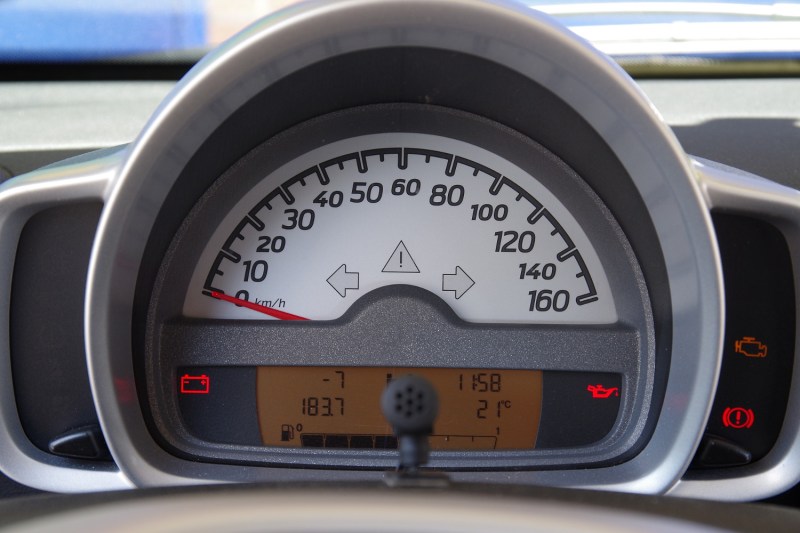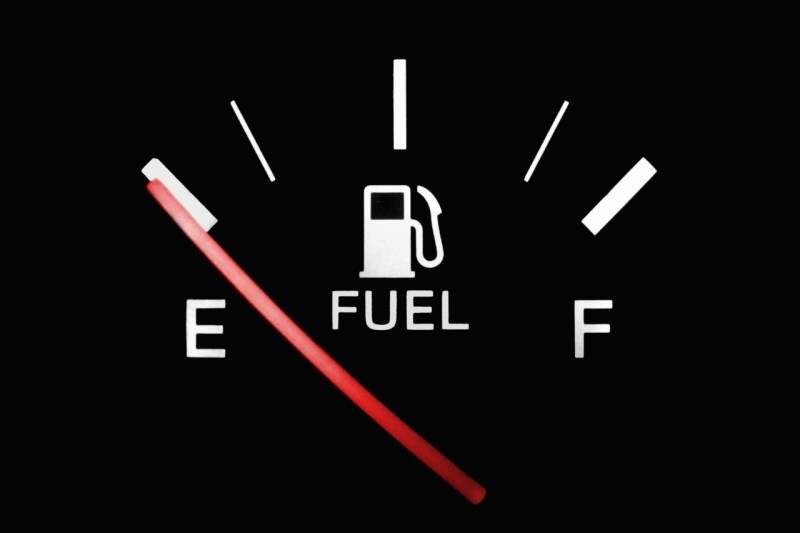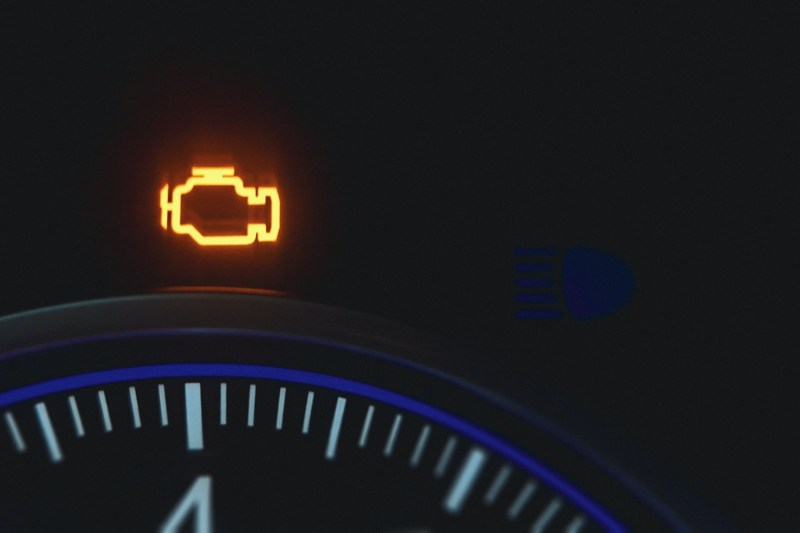Depending on what you drive (and how well you take care of it), your car may have anywhere between zero and half a dozen different warning lights on the dash at any given time. They’re all trying to tell you something, and some are more urgent than others. If you’ve got a new light on your dash (or have been driving around with one for longer than you care to admit), you’re in the right place. Below we’ll break down all the most common car warning lights you’ll see from behind the wheel, what they mean, and how to get them off your dash.

Check Engine/Service Engine Light
Ah yes, the dreaded check engine light. For many of us, the check engine light feels like a probable death sentence for our cars, but truth be told, it’s not always a big deal. Your car flashes the check engine light any time something’s wrong with any part of your engine or emissions system.
That means a check engine light could be something as harmless as a loose gas cap or as serious as a major internal failure. Not knowing what your check engine light is telling you is frustrating, but there’s an easy way to get to the bottom of this mysterious warning: Take your car to any large auto parts chain.
That’s because Auto Zone, O’Reillys, Pep-Boys, or any other reputable chain will diagnose your check engine light free of charge: All they have to do is hook your vehicle up to a code reader to see where the issue lies. If it’s a simple emissions-related issue, you’re in luck: Your car is safe to drive for the time being, but you’ll need to get it sorted out sooner than later to keep your vehicle street-legal and registered. If it’s more serious, you’ve likely got a visit to the mechanic in your immediate future…
Oil Pressure Warning Light
Your oil pressure warning light (that old-school oil can, typically appearing on your dash in “it’s time to panic” red) is another one you shouldn’t ignore. Like a check engine light, the oil pressure warning light can come on for a variety of reasons, and not all of them are immediately “life-threatening” to your vehicle.
Sometimes it’s as simple as a small oil leak dropping your fluid level too low, and sometimes it’s as complex as a blown piston ring inside the motor. Either way, for one reason or another your car’s lubrication system is missing something it needs to do its job, and you need to take care of it immediately.
Start by checking your oil level (you’ll need to give the car time to cool down first), and topping it off as necessary. Driving with a minor oil leak is no big deal, but driving a car without enough oil in the motor is a great way to grenade your engine. At some point, you’ll need to figure out how and why your vehicle is losing oil/oil pressure though, which may or may not involve an expensive repair. Start by checking under the car for any sign of leaks (dark spots in your driveway are a dead giveaway here), but if there’s no obvious leak or your car is running rough, don’t delay getting it in for service.
Temperature Warning Light
The temperature warning light is a serious one, and if you see it pop up on your dash, it’s time to pull over and shut the car off. This light is telling you that your engine is running too hot for one reason or another, and continuing to drive can lead to serious engine failure. Chances are you’ve either got a leaky radiator or a bad thermostat, although it could be something more serious like a blown head gasket. If you’re not comfortable diagnosing a cooling system issue on the fly, you’ll probably want to have your car towed to a shop to be safe.
Tire Pressure Sensor Light
If your vehicle is equipped with a tire pressure monitoring system (TPMS), there’s a good chance you’ll see this light at some point. Typically, this light is telling you one of two things: Either you’ve got one or more tires that are underinflated, or you’ve got a TPMS sensor that needs to be replaced.
To determine the culprit, you’ll want to use a tire pressure gauge to check the pressure of each of your tires. If you find a tire that needs a little air, pumping it back up to the factory recommended pressure is all you need to get this one off the dash. If you check all four tires and they’re all properly inflated, odds are the TPMS sensor itself is malfunctioning, and you’ll need to take your car to a tire shop or a mechanic to get it replaced.
Whether the light goes out or not, it’s perfectly safe to drive with this light on so long as you know all four of your tires are properly aired up. Just make sure to check your tires regularly, and get your vehicle checked out whenever you get a chance.
Battery Charge Warning Light
If you see the little red battery light pop up on your dash, you’ve got an issue somewhere in your electrical system that’s preventing your battery from charging properly. More often than not the culprit is simply an old battery that’s at the end of its useful life, but this light may also indicate a faulty alternator, drive belt, or even an issue in the wiring somewhere that’s siphoning off battery power. Most auto parts stores will diagnose a battery light free of charge, so pop in and get it checked at your first opportunity.
Brake System Warning Light
As you might guess, the brake system warning light means there’s something amiss with your vehicle’s braking system. Chances are you’ve seen this one a time or two when trying to drive away with the parking brake engaged.
Brake warning lights turn on in a variety of situations including worn brake pads, faulty ABS sensors, low brake fluid levels, or the aforementioned parking brake scenario. Being able to stop your vehicle is pretty important, so unless you know to a certainty what the issue is and its impact on your safety, we don’t recommend driving your vehicle with this light on whatsoever.
Low Fuel Warning Light

Consider the low fuel warning light a friendly reminder from your car that it can’t run on positive mental energy alone. This light means it’s time to start looking for a gas station ASAP. There’s no need to panic though: The low fuel light generally comes on when you’ve still got between 1 and 2 gallons left in the tank. If the light starts blinking, however, just know you’ve only got a few miles left before the car runs out completely, which is can be rough on your fuel system.
Editors' Recommendations
- These are the mistakes to avoid when you wash your car
- Treat your ride to the best car leather cleaners (so you don’t ruin your car’s interior)
- 7 things you probably didn’t know car insurance covers
- How To Keep Your Car Clean During Road Trips





